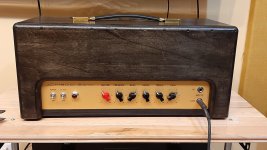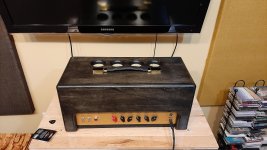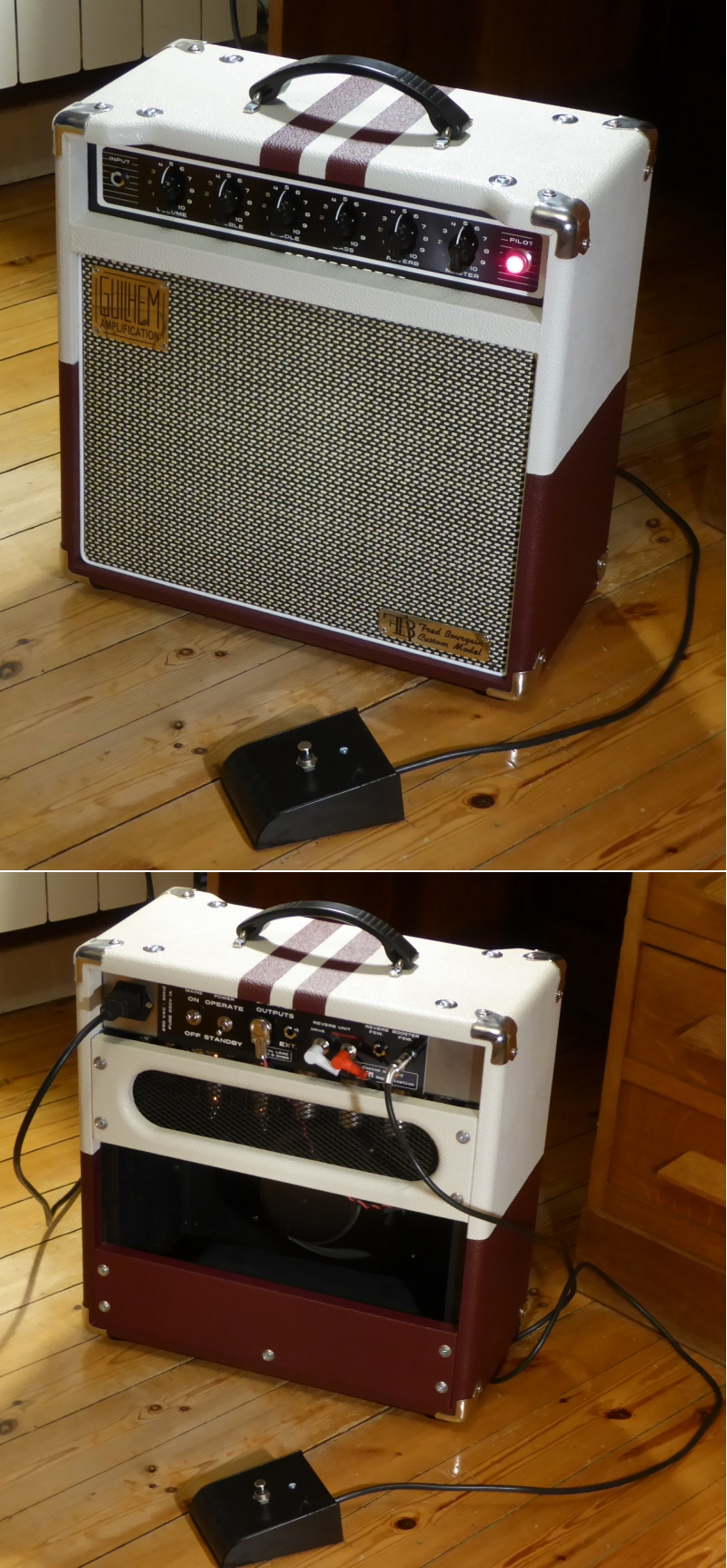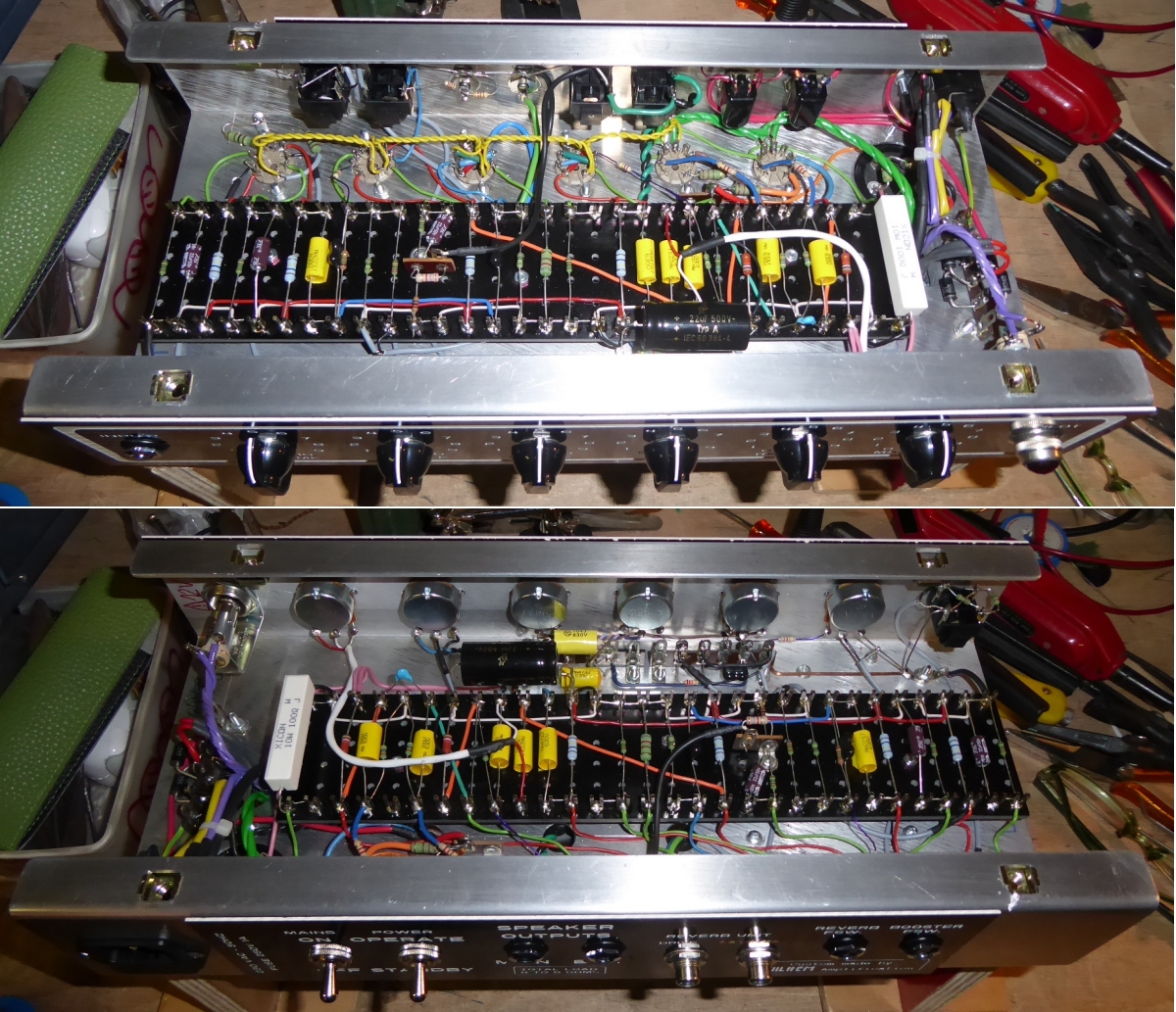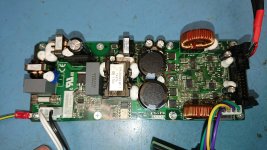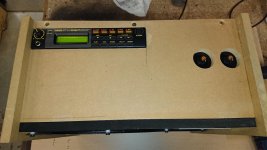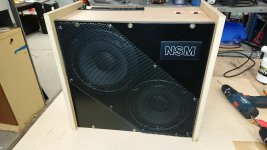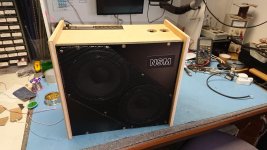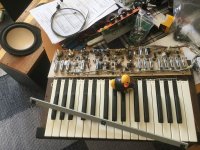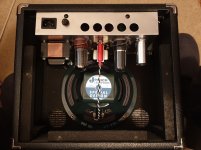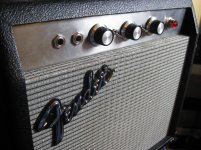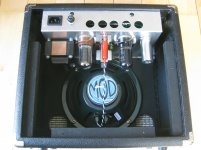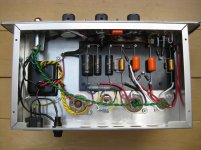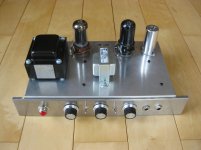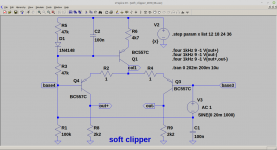Step 1: Create a 2cm High Paper Cylinder
we're gonna do is we're gonna cut, out a piece of paper that's roughly the same sort of thickness as that magnet, there and if I just make a mock with my, pen okay so we have a little strip of, paper and we're gonna do with the strip, of paper is we're going to roll it, around something that's perhaps slightly, larger than this magnet and have a perfect thing it's the same glue stick, that I'm gonna use to make that roll so, basically just gonna, just roll it around next is we're gonna, grab some of this half a mil thickness, laminated Coppa wire and wrap probably about 2cm so I'm gonna, measure it out, now we're just gonna wrap it until make, sure to leave one end loose
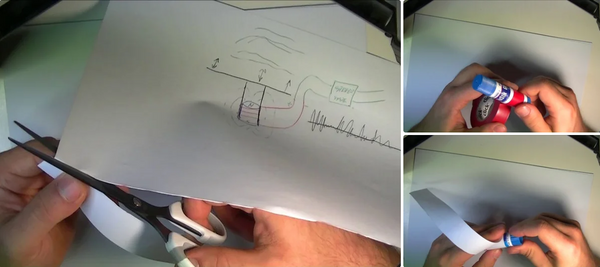
Step 2: Connect the Cylinder and a Plastic Plate With Hot Glue
Wrap up the paper cylinder with 2m of 0.5mm copper wire.
Make sure the cylinder is centered
Allow 5 minutes or more for the hot glue to dry
Use a lighter or some sandpaper to strip the ends of the copper wire
https://cdn.shopify.com/s/files/1/0281/8978/6250/files/Magnet_Loudspeaker_grande.png?v=1583567216
Step 3: Connect Speaker to Stereo Output and Test With Magnet
The speaker should work with both polarities, one of which may work better.
If the speaker works use some blue tac to secure the magnet to the table.
https://cdn.shopify.com/s/files/1/0281/8978/6250/files/DIY_Neodymium_Magnet_Loudspeaker_grande.png?v=1583567376
Step 4: Create Some Paper Springs With Business Cards
Adjust until the speaker works well.buy Neodymium Magnet
https://cdn.shopify.com/s/files/1/0281/8978/6250/files/Achieving_Neodymium_Magnet_Loudspeaker_grande.png?v=1583568060
we're gonna do is we're gonna cut, out a piece of paper that's roughly the same sort of thickness as that magnet, there and if I just make a mock with my, pen okay so we have a little strip of, paper and we're gonna do with the strip, of paper is we're going to roll it, around something that's perhaps slightly, larger than this magnet and have a perfect thing it's the same glue stick, that I'm gonna use to make that roll so, basically just gonna, just roll it around next is we're gonna, grab some of this half a mil thickness, laminated Coppa wire and wrap probably about 2cm so I'm gonna, measure it out, now we're just gonna wrap it until make, sure to leave one end loose

Step 2: Connect the Cylinder and a Plastic Plate With Hot Glue
Wrap up the paper cylinder with 2m of 0.5mm copper wire.
Make sure the cylinder is centered
Allow 5 minutes or more for the hot glue to dry
Use a lighter or some sandpaper to strip the ends of the copper wire
https://cdn.shopify.com/s/files/1/0281/8978/6250/files/Magnet_Loudspeaker_grande.png?v=1583567216
Step 3: Connect Speaker to Stereo Output and Test With Magnet
The speaker should work with both polarities, one of which may work better.
If the speaker works use some blue tac to secure the magnet to the table.
https://cdn.shopify.com/s/files/1/0281/8978/6250/files/DIY_Neodymium_Magnet_Loudspeaker_grande.png?v=1583567376
Step 4: Create Some Paper Springs With Business Cards
Adjust until the speaker works well.buy Neodymium Magnet
https://cdn.shopify.com/s/files/1/0281/8978/6250/files/Achieving_Neodymium_Magnet_Loudspeaker_grande.png?v=1583568060
I can't see the forest for all the trees. What's the goal? What are you trying to make? An electronic drum?...Step 1: Create a 2cm High Paper Cylinder...
-Gnobuddy
I think a loudspeaker, but far from clear. ATM I'd say the goal must be to make "something that produces sound"
DIY bass amp using ICE 700ASC power module, 3band fixed frequency EQ plus variable high pass filter, one band fully parametric EQ.
DIY cabs w/ BMS 15N630 woofer, 18Sound 6ND410 mid driver, BMS 4540ND compression driver. Passive 3 way crossover built into top box.
Marco Bass fretless MV4, w/neodymium sidewinder pickups, DIY 3-band onboard preamp w/outboard power via 4 pin XLR.

DIY cabs w/ BMS 15N630 woofer, 18Sound 6ND410 mid driver, BMS 4540ND compression driver. Passive 3 way crossover built into top box.
Marco Bass fretless MV4, w/neodymium sidewinder pickups, DIY 3-band onboard preamp w/outboard power via 4 pin XLR.

DIY Stereo guitar amp with Yamaha FX and class D stereo amp
Home (work) built cab with x2 Klipsch woofers. In a true Stereo configuration powered by a Pascal U-PRO2S 140wpc digital amplifier and fed from a Yamaha FX550 Pre/fx unit. The idea was to make a portable version of this twin 15" monster [GEAR] My DIY twin 15" guitar / combo amplifier - Hafler T2 preamp, Behringer FX2000 effects, Vintage Carlsbro 300w amplifier. : Guitar Also, here is another (google drive) image from construction showing the back of the cab Shared album - Daniel Shardlow - Google Photos
Home (work) built cab with x2 Klipsch woofers. In a true Stereo configuration powered by a Pascal U-PRO2S 140wpc digital amplifier and fed from a Yamaha FX550 Pre/fx unit. The idea was to make a portable version of this twin 15" monster [GEAR] My DIY twin 15" guitar / combo amplifier - Hafler T2 preamp, Behringer FX2000 effects, Vintage Carlsbro 300w amplifier. : Guitar Also, here is another (google drive) image from construction showing the back of the cab Shared album - Daniel Shardlow - Google Photos
Attachments
Last edited:
DIY bass amp using ICE 700ASC power module, 3band fixed frequency EQ plus variable high pass filter, one band fully parametric EQ.
DIY cabs w/ BMS 15N630 woofer, 18Sound 6ND410 mid driver, BMS 4540ND compression driver. Passive 3 way crossover built into top box.
Marco Bass fretless MV4, w/neodymium sidewinder pickups, DIY 3-band onboard preamp w/outboard power via 4 pin XLR.

Dude, That is fkn awesome! I bet that produces 'brown noise'!
Dude, That is fkn awesome! I bet that produces 'brown noise'!
There's another matching 115 cab for it, it might get loud! 😎
BTW, I have a modded Hafler T-2 preamp myself. It's great for distorted slide bass, among other things.
BTW, I have a modded Hafler T-2 preamp myself. It's great for distorted slide bass, among other things.
Mine isn't modded, but does benefit from fresh caps and tubes. I'm very happy with it.
Quickly :
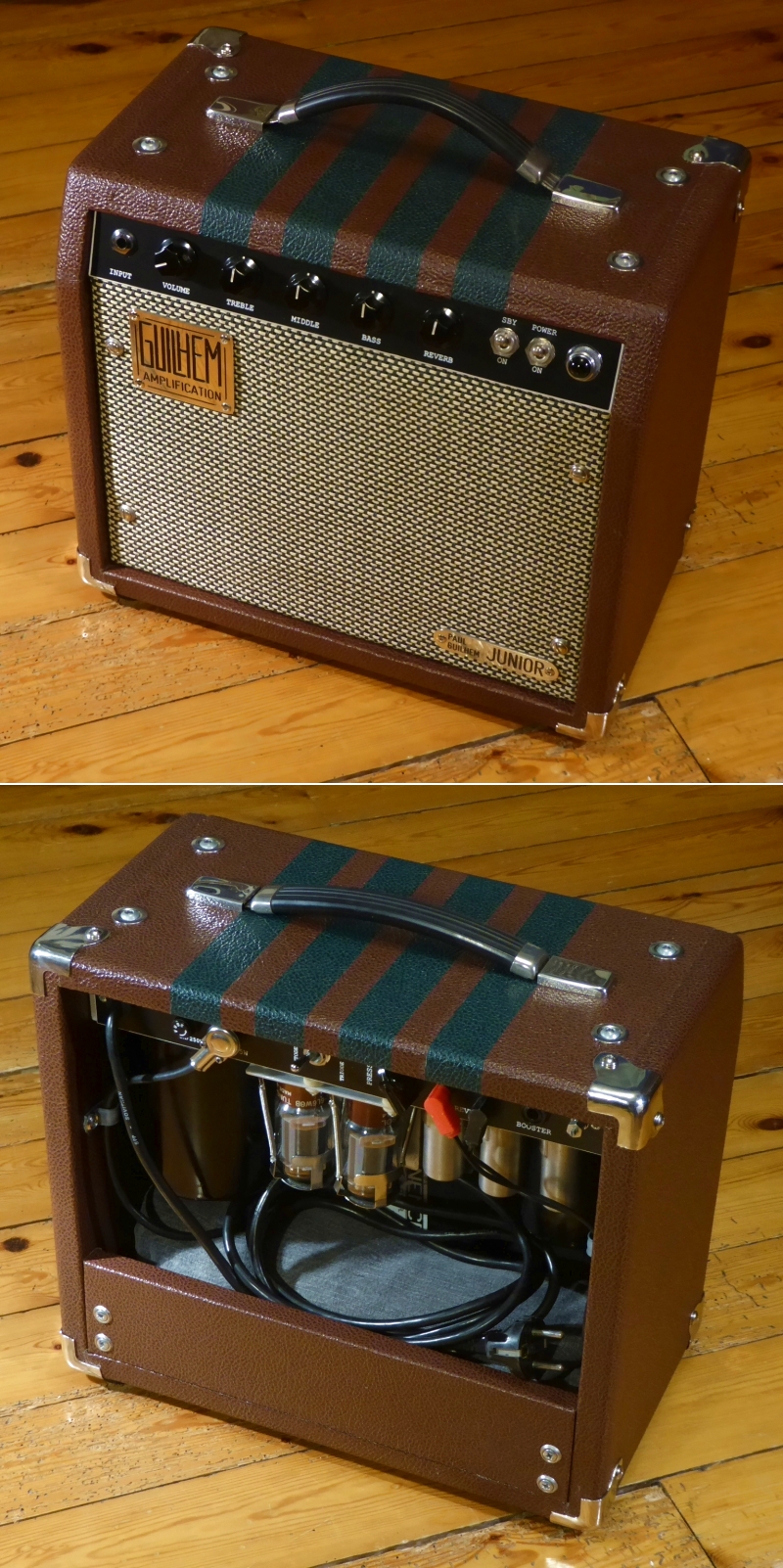
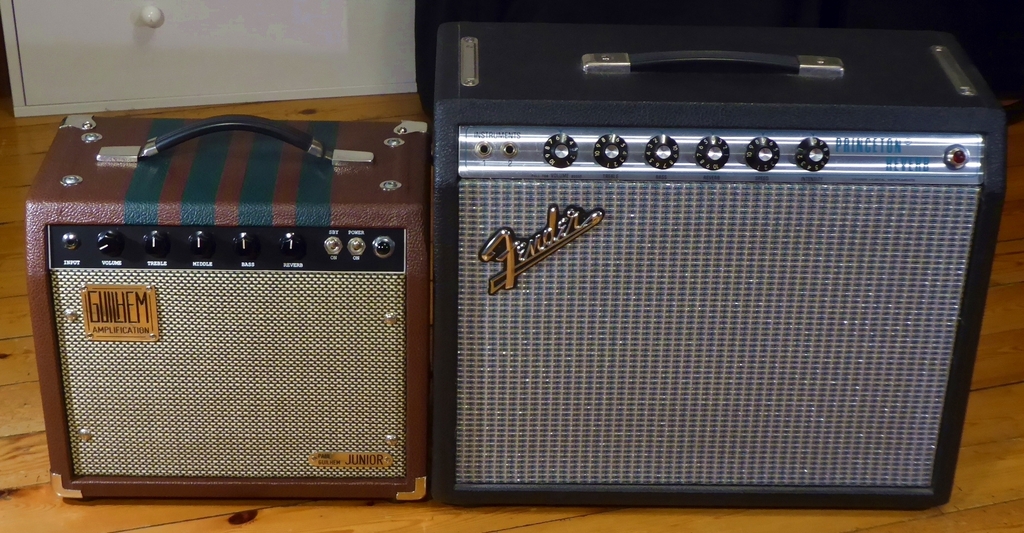
25WRMS output clean tone
8" ME8-100 speaker
All tube
Footswitchable booster
Spring reverb
15.6kg... A mini-anvil !
A+!


25WRMS output clean tone
8" ME8-100 speaker
All tube
Footswitchable booster
Spring reverb
15.6kg... A mini-anvil !
A+!
That is cute, how does the speaker sound? Not many foam surround speakers used for guitar, in open back cabinets at that.
It will take some time before I can publish anything, but a quick question:
Will most propably go for the Plexi 6V6 and a Celestion EIGHT, but is it totally crazy adding a tweeter?!
Here's my present projet(s):
Fixing a MOOG MG-1 (got new potentiometers and am looking into "necessary" mods)
Trying to finish a bunch of synth modules (Tube-VCA and Thomas Henry's VCA in the bag)
Adding L-pads to my un-orthodox 2-way speakers (started a year ago )
)
Will most propably go for the Plexi 6V6 and a Celestion EIGHT, but is it totally crazy adding a tweeter?!
Here's my present projet(s):
Fixing a MOOG MG-1 (got new potentiometers and am looking into "necessary" mods)
Trying to finish a bunch of synth modules (Tube-VCA and Thomas Henry's VCA in the bag)
Adding L-pads to my un-orthodox 2-way speakers (started a year ago
 )
)Attachments
If you find the tweeter too present you could pad it down or shape the sound to dampen it. at worst disconnect it. tougher adding it in later.
That depends very much on what kind of guitar you plan to use, and what kind of music you plan to play....is it totally crazy adding a tweeter?!
If it's an acoustic-electric guitar amp, a tweeter is a reasonable idea, with caveats. My own experiments suggest that there is nothing you want to hear from a guitar above 5 kHz (only unpleasant harsh sounds). But a big 10" or 12" speaker begins to "beam" the treble long before you get to 5 kHz, so if you get a midrange/tweeter that can be crossed over pretty low, say 500 Hz or 1 kHz, then you might get some use out of it. You might want to add a low-pass crossover network in line with the *tweeter*, to roll off frequencies above 3kHz - 5 KHz, depending on taste.
Next up, if the guitar is a hollow-body archtop, or a semi-hollow guitar like an ES-335, and you plan to play jazz with a clean tone, a tweeter won't hurt anything (it may not help, either, as jazz players tend to use a very muted tone with little treble content.)
If you use a solid-body electric guitar, and/or play to use any kind of distortion or "dirt" in your guitar tone, then the tweeter becomes a liability rather than an asset. At that point you will probably find you want a switch to remove the tweeter entirely.
I have heard of one electric guitar player - John Cipollina - who used (several) tweeters in his rig. To most people with reasonably normal hearing, his guitar tone was appallingly horrid.
Almost certainly he had suffered severe hearing loss, and could not hear treble frequencies as a result; he was probably compensating with his horn tweeters screaming out harsh loud treble that he could barely hear, but it is likely that he was further damaging his ears as a result. Treble frequencies at high SPL are extremely damaging to our ears.
Judging by this clip, Cipollina also couldn't tell that he was playing terribly out of tune, lending credence to the deafness hypothesis: YouTube
-Gnobuddy
It's a kit-built Bender Struttofaster, soooo a tweeter is maybe a bit over the top...
However IF I ever get my various synthesizers into the water, I may possible need some "tweeting", but maybe just a (hidden) switch can fix all that.
However IF I ever get my various synthesizers into the water, I may possible need some "tweeting", but maybe just a (hidden) switch can fix all that.
This is my practice amp built from scratch. It provides an input-amp with a normal and hot channel, an electronic reverb/chorus based on FV-1, master channel with 1-knob bass/treble control and soft clipping class-d-amp using TPA3116D2. Powered by 4x18650 LiIon-accus this little beast delivers something around 10Watts into the 4 Ohms Jensen MOD15. No problem to play an entire small club gig without re-charging.
The cabinet is from ZT Lunchbox. I replaced the driver by the above mentioned Jensen.
Perhaps I should mention that once in my life I built a tube guitar amp using 1x EF86 and 1xEL84. That was my first one, in 1967. Since that time I always played on DIY-amps. Without any tubes, for sure!😉
The cabinet is from ZT Lunchbox. I replaced the driver by the above mentioned Jensen.
Perhaps I should mention that once in my life I built a tube guitar amp using 1x EF86 and 1xEL84. That was my first one, in 1967. Since that time I always played on DIY-amps. Without any tubes, for sure!😉
Attachments
-
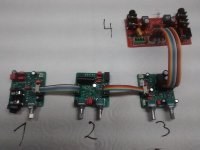 01_modules_IMG_20181011_113321048.jpg144.9 KB · Views: 360
01_modules_IMG_20181011_113321048.jpg144.9 KB · Views: 360 -
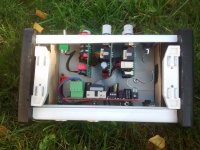 02a_top_inside_IMG_20181011_112133170.jpg221.1 KB · Views: 349
02a_top_inside_IMG_20181011_112133170.jpg221.1 KB · Views: 349 -
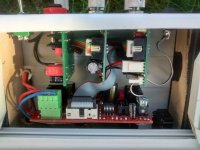 02b_top_inside_IMG_20181011_112143862_HDR.jpg176.6 KB · Views: 215
02b_top_inside_IMG_20181011_112143862_HDR.jpg176.6 KB · Views: 215 -
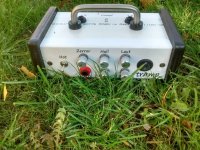 03_top_lawn_IMG_20181011_112119966_HDR.jpg283.6 KB · Views: 218
03_top_lawn_IMG_20181011_112119966_HDR.jpg283.6 KB · Views: 218 -
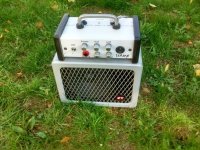 04_tramp_front_IMG_20181011_112309096_HDR.jpg299.4 KB · Views: 237
04_tramp_front_IMG_20181011_112309096_HDR.jpg299.4 KB · Views: 237 -
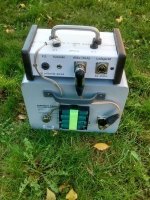 05_tramp_rear_IMG_20181011_112254942_HDR.jpg198.6 KB · Views: 217
05_tramp_rear_IMG_20181011_112254942_HDR.jpg198.6 KB · Views: 217 -
 06_IMG_20180825_204957760.jpg90.6 KB · Views: 214
06_IMG_20180825_204957760.jpg90.6 KB · Views: 214
My little Champ..
The enclosure started life as a Frontman 15g which is a 15w solid state amp, all the guts went in the bin and was replaced with a Tweed Champ 5E1/5F1 circuit with a switchable Princeton 5E2/5F2 tone control. Also has a switchable variable feedback control. Iron is all from Hammond, as is the alloy chassis with a brushed stainless steel front panel. Latest change was to upgrade the speaker to a Jensen P8R Alnico magnet. Great sounding little amp...
The enclosure started life as a Frontman 15g which is a 15w solid state amp, all the guts went in the bin and was replaced with a Tweed Champ 5E1/5F1 circuit with a switchable Princeton 5E2/5F2 tone control. Also has a switchable variable feedback control. Iron is all from Hammond, as is the alloy chassis with a brushed stainless steel front panel. Latest change was to upgrade the speaker to a Jensen P8R Alnico magnet. Great sounding little amp...
Attachments
Last edited:
This is my practice amp built from scratch. It provides an input-amp with a normal and hot channel, an electronic reverb/chorus based on FV-1, master channel with 1-knob bass/treble control and soft clipping class-d-amp using TPA3116D2. Powered by 4x18650 LiIon-accus this little beast delivers something around 10Watts into the 4 Ohms Jensen MOD15. No problem to play an entire small club gig without re-charging.
The cabinet is from ZT Lunchbox. I replaced the driver by the above mentioned Jensen.
Perhaps I should mention that once in my life I built a tube guitar amp using 1x EF86 and 1xEL84. That was my first one, in 1967. Since that time I always played on DIY-amps. Without any tubes, for sure!😉
What are you using for a soft clip circuit? Sounds pretty close to a project I want to do.
- Home
- Live Sound
- Instruments and Amps
- Post your DIY Musical Instruments/Amps here!
